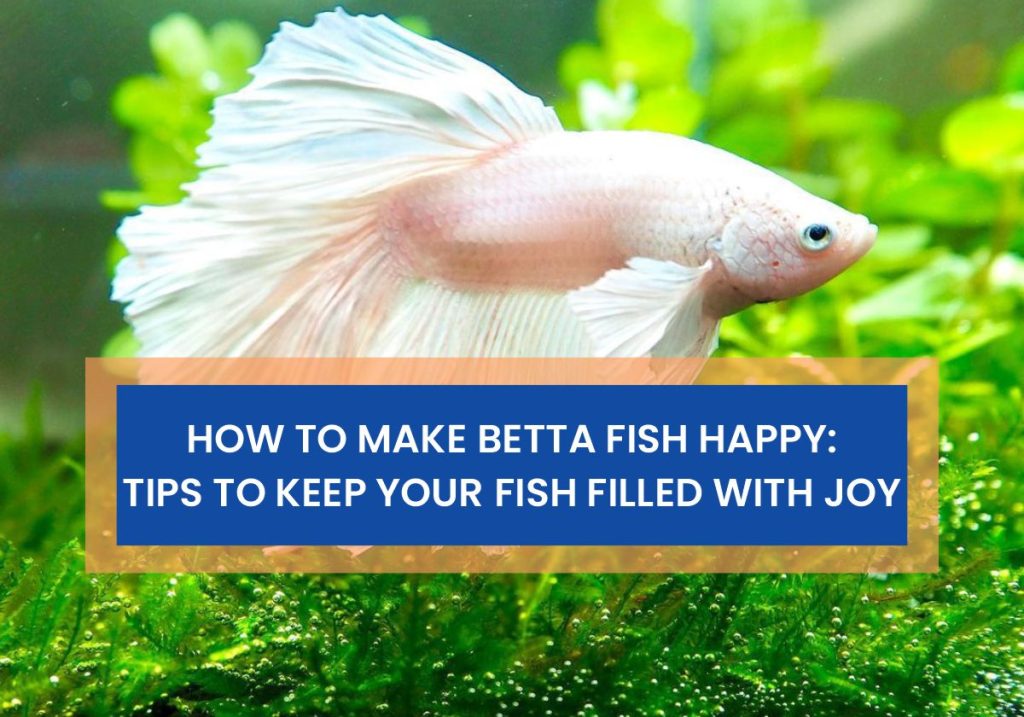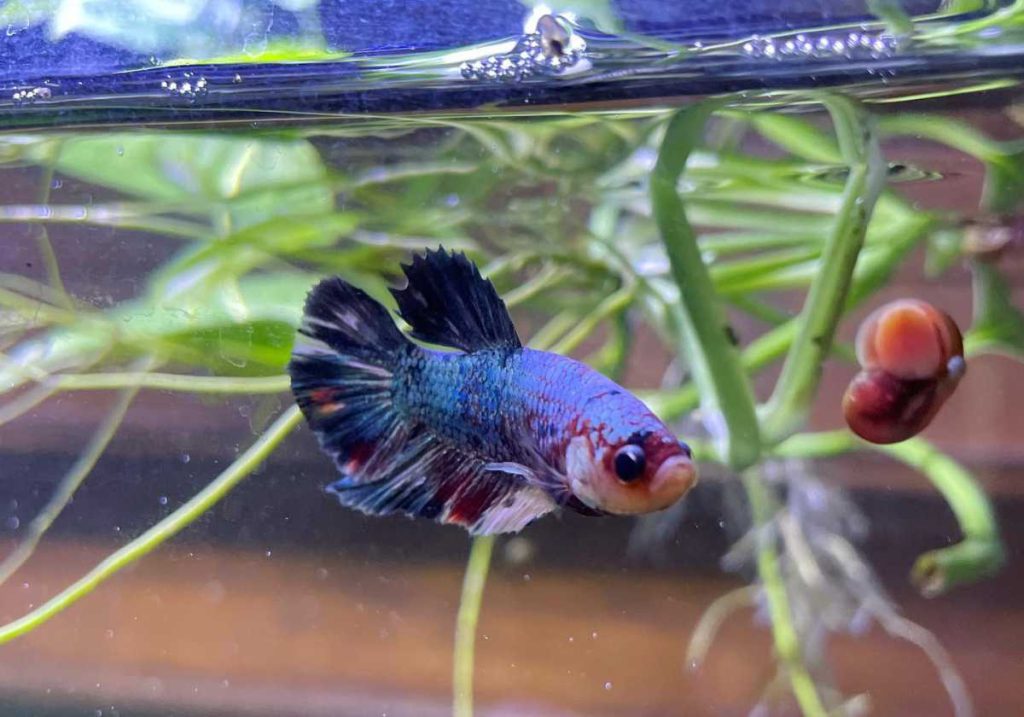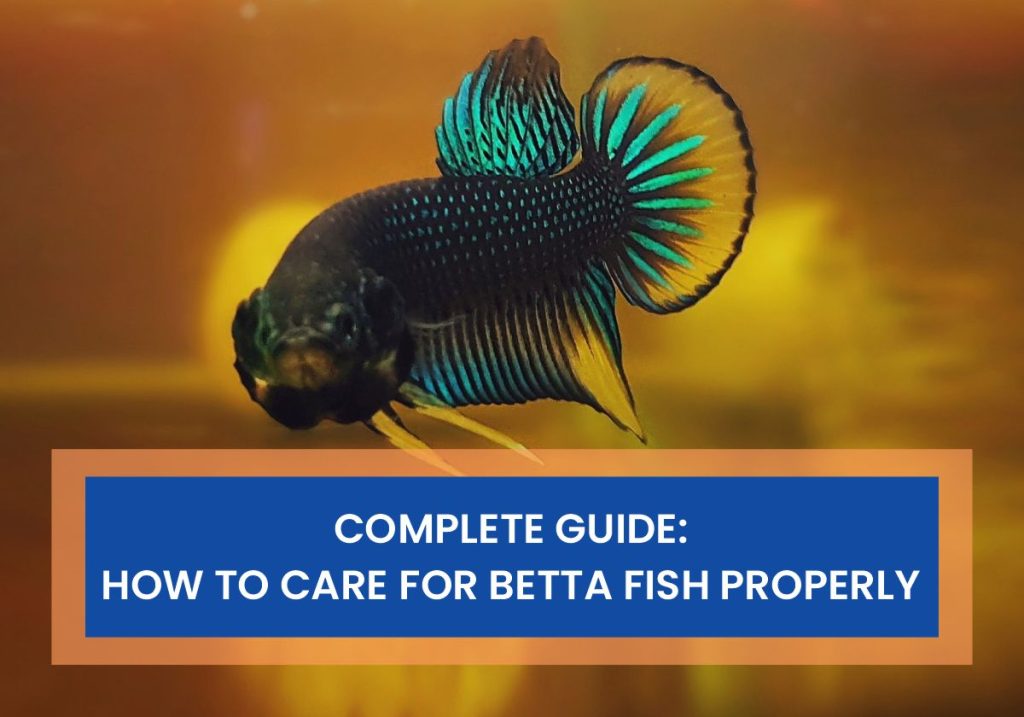As an Affiliate, We may earn a commission that doesn't cost you extra from qualifying purchases using links in this post. It helps keeps this blog running.
Are you thinking about giving your betta fish an upgraded living space? Prepare for an exciting transformation that both you and your pet fish will absolutely adore! Whether you’re expanding the Betta’s home with a more spacious tank or creating a fresh new habitat, moving your betta from its bowl to a tank demands a bit of finesse. But don’t fret – we’re here to assist you through each step of this significant process.
In this guide, we’ll accompany you on a journey to smoothly transition your betta from its bowl to a new tank. From gathering all the necessary supplies to helping your betta settle comfortably into its new environment, we’ve got everything well covered. By the time you finish reading, you’ll possess all the know-how you need to guarantee a seamless and stress-free relocation for your underwater pal. So, let’s take the plunge and explore how to make your betta’s shift to a new tank a resounding triumph!
Do Betta Fish Do Better In A Bowl Or Tank?
So, you’re wondering about your Betta fish – thinking if they’re happier in a bowl or a tank. Well, it’s a bit like asking if you’d prefer a tiny room or a spacious apartment – Betta fish, like us, do better in a bigger space.
See, Betta fish are naturally found in the wild with lots of room to swim around, so they enjoy having some space to stretch their fins. A tank is usually a better choice than a bowl because it gives them more room to explore and swim happily.
In a bowl, things can get a bit cramped, and it’s harder to keep the water clean and healthy. But in a tank, you can have a proper filter and a heater, which helps keep the water just right for your fishy friend. Plus, tanks usually have more surface area, and that’s important because Betta fish breathe air from the surface.
Remember, happy fish are healthy fish, and giving your Betta a nice big tank with proper equipment can help them live their best life. So, if you want to see those vibrant colors and playful behaviors, go for a tank – your Betta will thank you!
Preparation of Transferring Betta from Bowl to Tank
If you’re sprucing up your betta fish’s living space, it’s essential to approach it thoughtfully. Relocating them to a different tank might appear to be a sensitive task, but by taking the right steps, it can be a smooth process that keeps both you and your betta fish at ease.
In this part, we’ll dive into the details of getting ready for the move, providing step-by-step guidance on how to go about it, and sharing tips for after the move to make sure your betta settles comfortably into its new tank. So, grab a pen and paper (or save this page) because we’re about to start a journey to establish a fresh and comfy tank for your beloved betta fish.
Essential Gear and Items You Will Be Needing
Moving a Betta fish from a bowl to a tank requires careful planning and preparation to ensure the fish’s well-being. Here’s a list of supplies and items you’ll need, along with explanations for each:
- Aquarium Tank: Choose an appropriate-sized tank for your Betta fish. A tank with a capacity of at least 5 gallons is recommended, as it provides a more stable environment than a smaller bowl.
- Water Conditioner: A water conditioner helps remove chlorine and chloramines from tap water, making it safe for your Betta.
- Aquarium Filter: A filter helps maintain water quality by removing toxins and providing water circulation. Make sure the filter’s flow isn’t too strong, as Betta fish prefer calm waters.
- Heater: Betta fish are tropical fish and require a consistent water temperature between 78-80°F (25-27°C). A heater helps maintain this temperature range.
- Thermometer: To monitor the water temperature and ensure it stays within the appropriate range.
- Substrate: Choose a substrate such as aquarium gravel or sand. Avoid sharp or rough substrates that could harm the Betta’s delicate fins.
- Decorations: Provide hiding spots and areas for exploration with decorations like plants, caves, and ornaments. Make sure decorations don’t have sharp edges.
- Live or Silk Plants: These provide cover, enrichment, and a more natural environment for your Betta. Avoid plastic plants with sharp edges.
- Water Test Kit: Regularly test the water parameters (ammonia, nitrite, nitrate, pH) to ensure a healthy environment for your Betta.
- Bucket or Container: Use a clean container or bucket designated for aquarium use to hold water during the transfer.
- Siphon or Gravel Vacuum: This helps with partial water changes and cleaning the substrate.
- Fish Net: A soft and fine-meshed net is used to gently catch and transfer the Betta.
- Fish Bag or Container: Prepare a clean plastic bag or container to transport the Betta from the bowl to the tank.
- Fish Food: Maintain your Betta’s feeding schedule and provide a balanced diet.
- Betta Fish: The star of the show! Ensure your Betta is healthy before the transfer.
9 Simple Steps to Transfer Betta Fish from a Bowl to a Tank
By following the below steps and having the necessary supplies, you can ensure a smooth transition for your Betta fish from a bowl to a tank, providing it with a healthier and more suitable living space.
Step 1: Tank Preparation
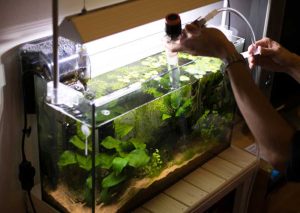
Begin by setting up the new aquarium tank with substrate, decorations, heater, and filter. Fill the tank with dechlorinated water and adjust the heater to maintain a temperature of 78-80°F (25-27°C). Allow the tank to cycle for a day or two to establish beneficial bacteria, which will help create a healthy environment for your Betta.
Step 2: Water Transfer
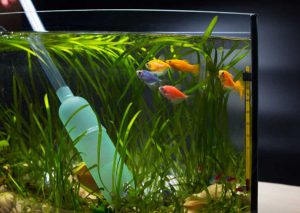
To minimize the shock of a new environment, use a siphon or gravel vacuum to transfer a portion of the conditioned water from the Betta’s current bowl to the new tank. This gradual introduction of familiar water helps the Betta adapt more smoothly.
Step 3: Catching the Betta
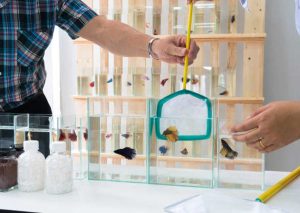
Gently approach the Betta fish with a soft, fine-meshed fish net. Take your time and move slowly to avoid startling or stressing the fish. Carefully guide the net around the Betta, ensuring a gentle and patient approach.
Step 4: Transportation
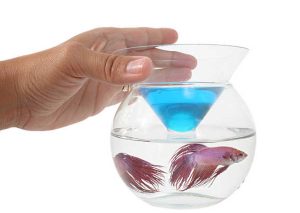
Prepare a clean plastic bag or container specifically designated for aquarium use. With utmost care, transfer the Betta from the net into the bag, adding a small amount of water from the bowl to provide a familiar environment. Seal the bag, leaving enough space for air exchange.
Step 5: Acclimation

Place the sealed bag with the Betta into the new tank’s water. Allowing it to float for about 15-20 minutes helps the Betta gradually adjust to the temperature of the new water. This step minimizes temperature shock.
Step 6: Gradual Mixing

Open the bag and create an air pocket by folding down the top. Over the next 15 minutes, add small amounts of water from the tank into the bag at intervals. This gradual mixing helps the Betta become accustomed to any differences in water parameters between the bowl and the tank.
Step 7: Release into the Tank
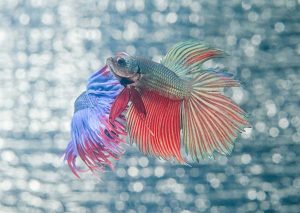
Gently release the Betta into the tank, taking care not to pour water from the bag into the tank. Allow the Betta to swim out of the bag at its own pace. This step marks the beginning of its exploration in its new home.
Step 8: Observation and Care

Observe the Betta as it explores its new environment. Some initial shyness is normal during this transition. Ensure the Betta is eating and behaving normally, which indicates it’s adapting well to the tank.
Step 9: Regular Maintenance
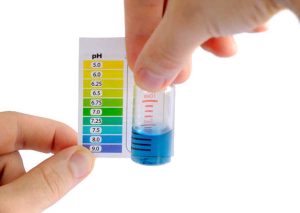
Maintain the tank by monitoring water parameters using a water test kit. Perform partial water changes as needed to sustain water quality. Continue your routine feeding and care to ensure the well-being of your Betta in its improved habitat.
How Do I Know If My Betta Fish Likes Its Tank?
Bettas aren’t like dogs wagging their tails, but they do show some signs if they’re comfy. Things like swimming around smoothly, exploring nooks, and being curious about stuff mean your Betta might be enjoying its home.
Remember, a cozy tank with clean water and some hiding spots can make your Betta feel like a fish in, well, water. If your Betta’s hanging out near the top or not moving much, it could be stressed or not too thrilled. Watching its behavior can give you a hint if it’s feeling good or a bit off.
But hey, don’t get stressed yourself! Just keep an eye on your Betta, and if you notice it’s active and zipping around happily, you’re probably doing things right. And oh, don’t forget, a balanced diet and the right water temperature add to the good vibes.
So, in a nutshell, happy Betta equals lively swimming and checking out its digs. Keep the tank comfy, be a cool fish parent, and you’ll likely have a contented Betta buddy.
What Do Betta Fish Want In Their Tank?
Betta fish care isn’t that complicated, but there are 10 few key things you should keep in mind to keep your little aquatic buddy happy and healthy.
- Tank Size and Shape: First things first, make sure your Betta has enough space to swim around. A tank of around 5 gallons or more is ideal. Round tanks can be a bit confusing for them, so go for rectangular or square shapes. More space means more freedom for your Betta to explore.
- Water Temperature: Betta fish come from warm regions, so they like their water on the warmer side. Aim for a temperature around 78-80 degrees Fahrenheit (25-27°C). This keeps them comfy and active.
- Clean Water: Imagine living in a dirty room – not pleasant, right? Bettas are no different. Regular water changes are a must. Aim for at least 25% water change every week to keep the tank clean and fresh.
- Hideouts and Plants: Bettas enjoy having spots to hide and chill out. Adding some decorations like caves, plants (real or fake), or even little tunnels gives them a sense of security. Live plants also help maintain water quality.
- Proper Filtration: Clean water is a happy Betta’s dream come true. A gentle filter helps keep the water clear of debris and waste. Just make sure the flow isn’t too strong, as Bettas prefer calm waters.
- Appropriate Lighting: Bettas don’t need super bright lights. A soft, low-intensity light cycle with a day-night rhythm is great. It also helps to prevent algae from taking over.
- Right Food: Feeding your Betta a balanced diet is crucial. They’re carnivores, so opt for high-quality Betta pellets or flakes. Treat them with freeze-dried or frozen treats like bloodworms or brine shrimp once in a while.
- No Aggressive Tankmates: Bettas are a bit territorial and can be aggressive towards other Betta fish and flashy fish with long fins. So, choose tankmates carefully. Peaceful fish like snails or small shrimp can be good companions.
- Water Conditioner: Tap water might have chlorine or chloramine that’s not good for your Betta. Use a water conditioner to make the tap water safe for them.
- Regular Observation: Just like you’d notice if your pet dog or cat is acting odd, keep an eye on your Betta. If they suddenly become lethargic, lose their appetite, or show any signs of illness, it’s time to investigate and take action.
Frequently Asked Questions (FAQ)
What size tank should I use?
Choose a tank with a minimum of 5 gallons for a Betta. Bigger tanks offer better water parameters and space.
How often should I feed my Betta during and after the move?
Feed it sparingly every 12-24 hours. Resume normal feeding after it settles in the tank, watching for appetite cues.
Should I cycle the new tank?
Yes, let the tank cycle for a day or two before adding your Betta. This helps establish beneficial bacteria.
What’s the right water temperature for Betta fish?
Maintain a temperature of 78-80°F (25-27°C) using a heater. Consistent warmth is crucial.
Can I keep other fish with my Betta?
Carefully select tankmates. Avoid fin nippers and aggressive fish. A peaceful community tank is possible.
How often should I clean the tank?
Perform partial water changes of 20-30% weekly. Vacuum the substrate and clean the filters regularly.
Why is my Betta hiding and not eating after the move?
Your betta is hiding and not eating for now because it is adjusting to the new tank environment. This is normal while it adjusts. Give it time to explore and settle. Monitor closely and offer food when it shows interest.
Do bettas prefer still or moving water?
Bettas prefer still or gentle-flowing water. Strong currents can stress them. A filter with adjustable flow is ideal.
What makes a betta fish happy?
A suitable tank size, proper water conditions, hiding spots, and compatible tankmates contribute to a happy betta. A varied diet and a calm environment matter too.
Can a betta live without a filter?
While possible, a filter helps maintain water quality. Regular water changes and thorough cleaning are necessary if a filter isn’t used.
What is the lifespan of a betta fish in a bowl?
In a bowl, a betta’s lifespan may be shortened to around 1-2 years due to limited space and water quality issues. A tank with proper care can extend their lifespan to 3-5 years or more.

I’m Akin Bouchard. Even though I now own several different fish species, I first became a koi pond owner because I loved these creatures and wanted to turn my passion into something more serious. I take pride in my collection of koi fish and love sharing my knowledge with others interested in these beautiful creatures.


